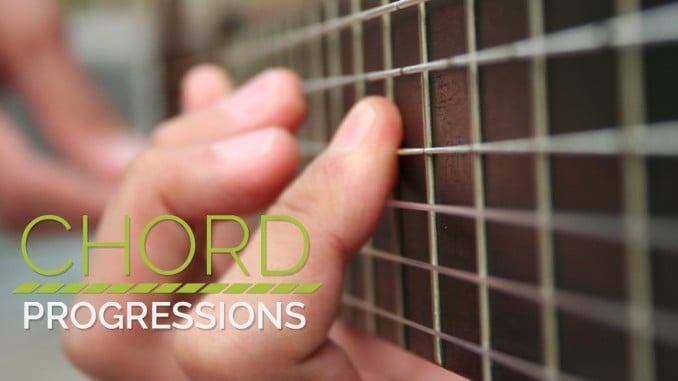
This lesson will teach you progressions in several styles so you can learn from known progressions and styles. This lesson will cover the 50’s progression, the Let It Be progression, jazz progressions, blues progressions, and more This lesson is loaded, so let’s get started!
The 50’s Progression
I like to start with the 50’s progression because it is recognizable, playable in open position, and it only requires 4 chords. I’m going to give you a few examples using the major and minor CAGED chords and F chord thrown in. I’m going to give you three versions. These progressions are still used today. You can use the infographic below to help you remember all three variants.
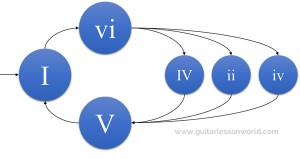
I-vi-IV-V
This is the classic 50’s progression in the Key of C. It is very popular and still used today.

I-vi-iv-V
The Sleep Walk by Santo & Johnny variant switches the IV from a major to a minor chord, which is symbolized by the lower-case numerals.

I-vi-ii-V
This is a variant of the 50’s progression that I prefer. Notice that it uses a ii-V-I. We’ll talk about that in the Jazz Progressions section.

Pachelbel’s Canon
Usually this is played in D, but it translates to guitar more easily in the key of G.
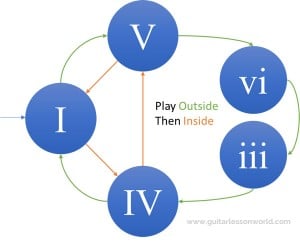

Let it Be Progression
This is an extremely popular progression. It was used by the Beatles’ Let it Be. You’ll hear it in Don’t Stop Believin’, House of the Rising Sun, and more. It is a I-V-vi-IV.
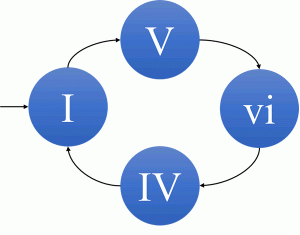
The example follows this chord progression in the key of C.
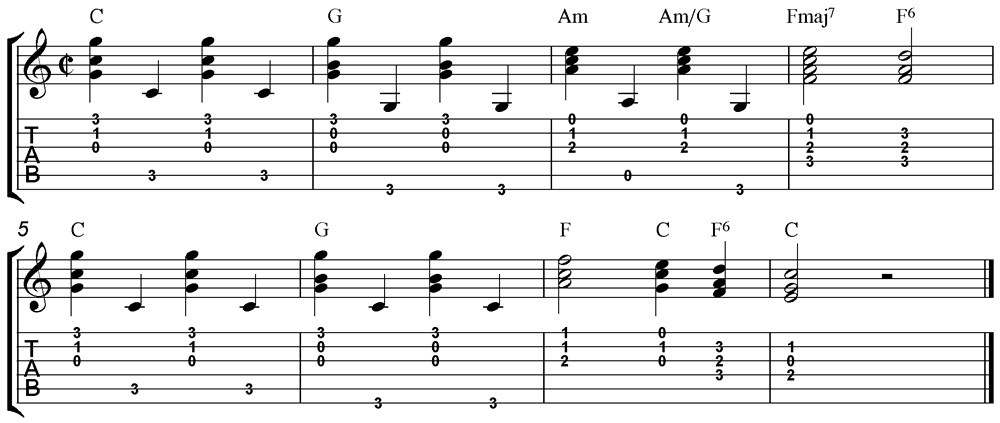
Flamenco Progression (vi-V-IV-III)
Descend down the fretboard using these chords for a flamenco sound. Notice that it uses a major III instead of a minor iii.

Jazz Progressions
There are a lot of Jazz progressions. Often, they are modified and expanded upon. I will present two of the most commonly used Jazz Progressions. You will notice that similar sequences were used in the 50’s progression. The big difference is that Jazz musicians use seventh chords and other harmonies to add complexity.
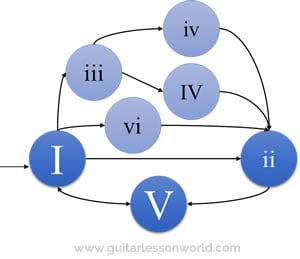
ii-V-I
Perhaps the most common progression in Jazz is the ii-V-I. It was even part of one of the 50’s progressions, but this progression uses seventh chords.

vi-ii-V-I
This is also commonly used among other chords in Jazz. By itself, it is one of the 50’s progression variants. The difference is that Jazz uses seventh and extended chords more often.

iii-IV7-ii-V-I
This one is interesting. I label it as the iii-IV7, but the iii-IV7 is really a ii-V of the 2nd degree (which is minor). that leads into the ii-V-I

You can spice it up a bit by switching the first chord to a minor7b5. This implies the use of the harmonic minor scale (if you want to improvise over it).

iii-vi-ii-V-I
You can start this one with a I-ii-V first, but the key is that you are expanding on the vi-ii-V-I.

i-ii-V+-i
Try this minor progression with a ii7b5 and an A+7 (augmented 7). This one will feel a bit unfinished. Finish with a C major instead of a Dm7 if you want a finished sound.

Blues Progressions
I am going to present two blues progressions. The basic 12 bar blues using dominant 7 chords and the minor blues, which is often played slowly. One of my favorite slow blues songs is Red House by Jimi Hendrix. There are many variants that build upon this form. I won’t go into all of them, but this should give you a start.
12 Bar Blues
This example is in the key of C, with C7, F7, G7. It is commonly played with a shuffle eighth note feel. The last measure ends on a V7 when you repeat and a I7 when you end the song. I show the form with a V7 for general uses, but the notated example shows a I7 because it does not repeat.
12 Bar Blues Form I7-I7-I7-I7 IV7-IV7-I7-I7 V7-IV7-I7-V7
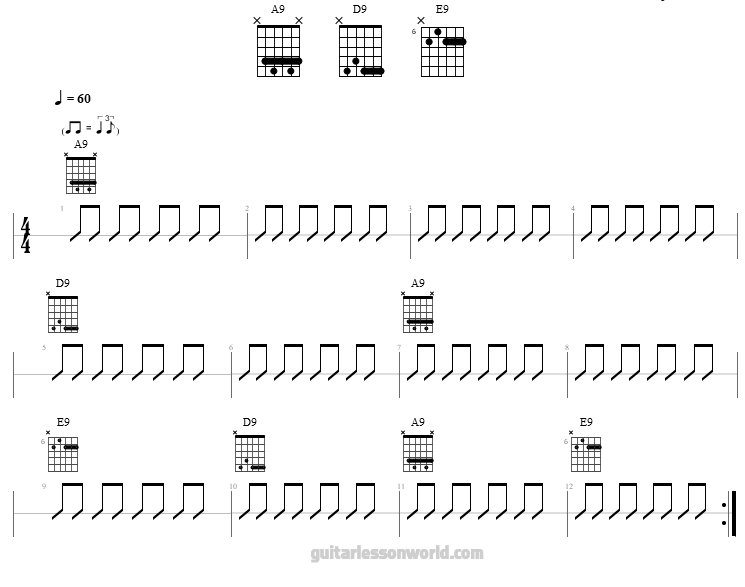
Quick Change Blues
Change the second measure to a IV7. In the key of A, this will be a D7. Note that this example generally substitutes dominant 9th chords for the dominant 7th chords of the form. This example also uses a much different feel.
Quickchange 12 Bar Blues Form I7-IV7-I7-I7 IV7-IV7-I7-I7 V7-IV7-I7-V7
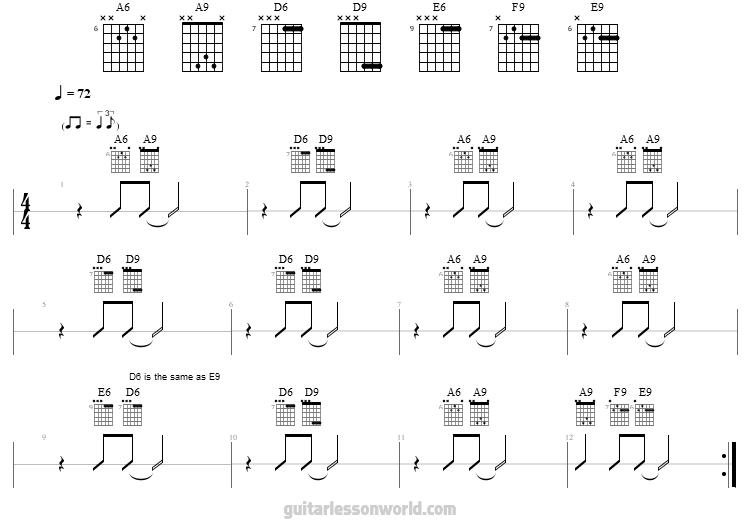
Minor Blues
We just change the I and IV to a minor chord. The key is A minor. Feel free to use minor 7 for the minor chords. It follows the 12 bar blues forms so you can use the quick change on the second measure as shown below in the key of A minor. This example also adds a i7-iv7-i7-V+ blues turnaround in the last two measures. It works well because it starts with the i7 as expected and ends with the V7 as expected. You can apply turnarounds to any blues form that will be repeated.
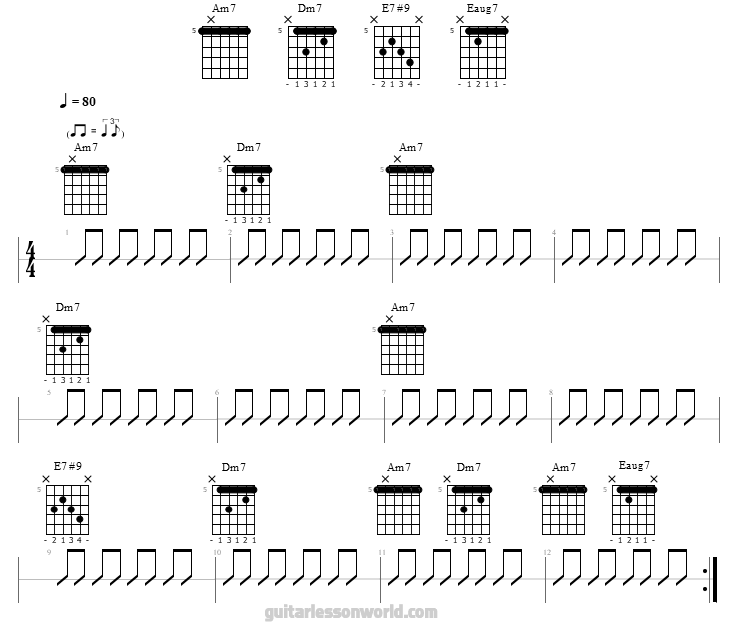
8 Bar Blues – Nobody Knows When You’re Down and Out
The 8 bar blues isn’t as strict as the 12 bar blues. This 8-bar blues progression is from Jimmie Cox’s 1923 blues classic titled, Nobody Knows When You’re Down and Out. As with most blues songs, it does not stick to traditional diatonic harmony and is worth a study.
Nobody Knows When You're Down and Out Chord Progression: I – III7 | VI7 | ii – VI7 | ii IV – ♯ivdim | I – VI7 | II7 | V7
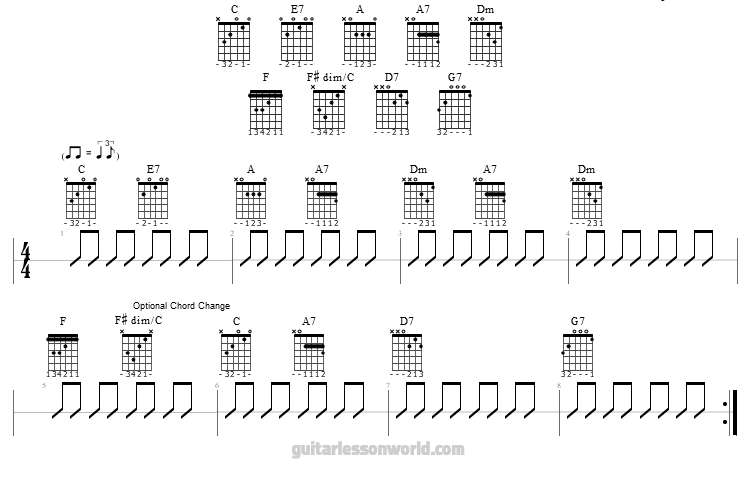
Importance of V-I
You probably noticed how often the V-I change is used. The resolves strongly to the I chord. This really gives it that completed feeling. If you end on a V chord, it feels unfinished or tense. This is something you should learn to hear. Tension and resolution is a core part of how chord progressions work.
Conclusion
I hope you had a lot of fun learning these progressions. Many of them are formed using diatonic harmony, which you can learn more about in Guitar Lesson World: The Book.


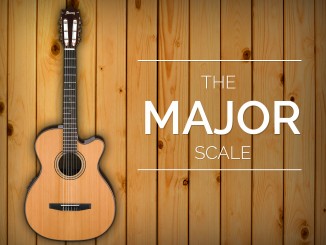
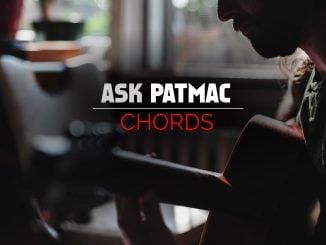

That’s a great work!
Music simplified for easy comprehension!
Thanks folks !
Patmac, guitar lesson world is an excellent tool for learning the guitar,thanks.
I have scanned through this, I like it as for what I am looking for. I made a copy of it, to study. I am past beginner stage, but not in advanced stage on the guitar. I’m in hopes this will help me for a while. Thanks for the help.
i really enjoyed that material, thanks but i want to know more about chords and applications
I still have to check it out more but the fact that you mentioned 50s music got me sucked it since I’m a fan of the classics (1950s-1990 roughly). Today’s music doesn’t have the rich harmonies that they used back then, and the wisdom they had in the 50s to be able to harmonize such beautiful music doesn’t become a lost art… So, thanks for sharing the info.
Hi Pat this is Wayne thanks for all you have here,my biggest problem is playing lead over a chord progression,i just don’t know what notes to play,example,lets say im playing D-Em-G just those 3 chords my problem is what notes do I use for playing lead over those chords
Sorry for the delayed reply. You’re playing in the key of D major. So the simple answer is that you can always play notes from the D major scale. If you’re well-practiced in playing modes, you may want to try to the G Lydian mode (same notes as D major but you may think differently about how you play them).
I hope this helps.